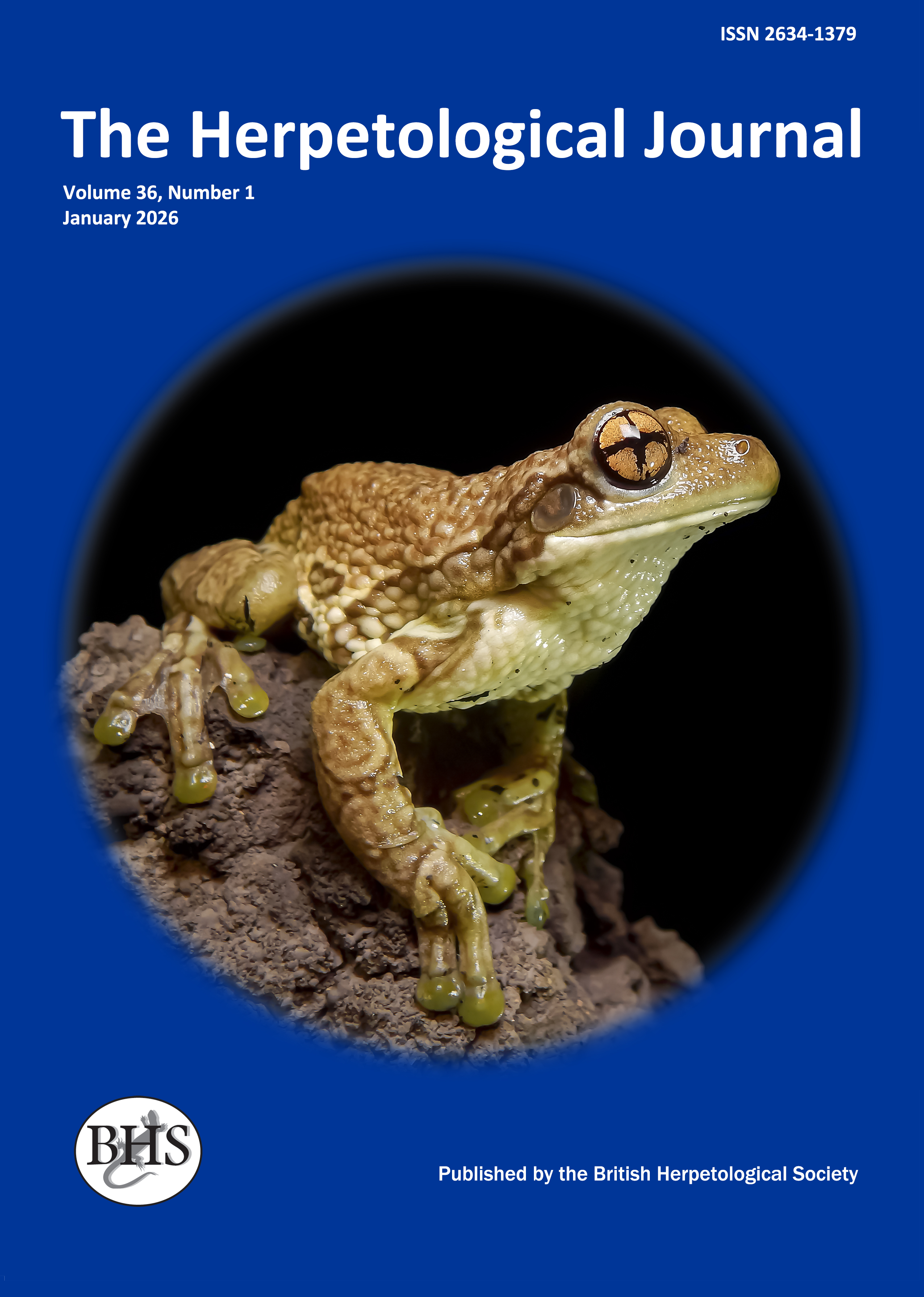
The Herpetological Journal
The Herpetological Journal is the Society's prestigious quarterly scientific journal. Articles are listed in Biological Abstracts, Current Awareness in Biological Sciences,Current Contents, Science Citation Index, and Zoological Record.
ISSN 0268-0130
2023 Impact Factor for the Herpetological Journal is 1.1, with the Journal sitting just below Quartile 2 in Zoology, at percentile 46.9
pdf 01. Taxonomic revision of the spider geckos of the genus gamura senso lato Blanford, 1874 (Sauria: Gekkonidae) in the Iranian Plateau
1300 downloads
Open Access
https://doi.org/10.33256/hj29.1.112
pp. 1-12
Authors: Seyyed Saeed Hosseinian Yousefkhani, Mansour Aliabadian, Eskandar Rastegar-Pouyani & Jamshid Darvish
Abstract: In this study, we present an integrative systematic revision of the spider gecko, Agamura senso lato, in Iran. We sampled 56 geckos of this complex from its distributional range in Iran and western Pakistan and sequenced these for two mitochondrial markers, cytochrome b and 12S ribosomal RNA, and one nuclear marker, melano-cortin 1 receptor. We combined our molecular data with species distribution modelling and morphological examinations to clarify Agamura persica systematics and biogeography. Due to a lack of published data, we used only our data to investigate the spatial and temporal origin of spider geckos within a complete geographic and phylogenetic context. The phylogenetic analyses confirm the monophyly of Agamura. Among spider geckos, Rhinogekko diverged around the early-mid Miocene (17 Mya) from the Lut Block, and then Cyrtopodion diverged from the Agamura clade about 15 Mya in the mid-Miocene as a result of the uplifting of the Zagros Mountains. Subsequent radiation across the Iranian Plateau took place during the mid-Pliocene. Agamura kermanensis exhibits deep divergence from two other species of Agamura (A. persica and A. cruralis), whereas no geographical substructure was observed on the Iranian Plateau for A. persica and A. cruralis. Our findings reveal that diversification is consistent with a biogeographical model explained by different dispersal waves and vicariant events on the Iranian Plateau during the last 18 Mya. The divergence times between clades are compatible with orogenic events in southern Iran that resulted from the collision with Arabia. According to the genetic differentiation of both mtDNA genes (12S and cytochrome b), the systematic status of A. cruralis is confirmed, the new clade was distinguished from the genus Agamura, monophyly of Rhinogekko was confirmed and the allocation of Cyrtopodion gastrophole to the Cyrtopodion clade was confirmed.
Key words: Agamura, agamuroides group, divergence time, Iranian Plateau, Rhinogekko, spider geckos, vicariance

